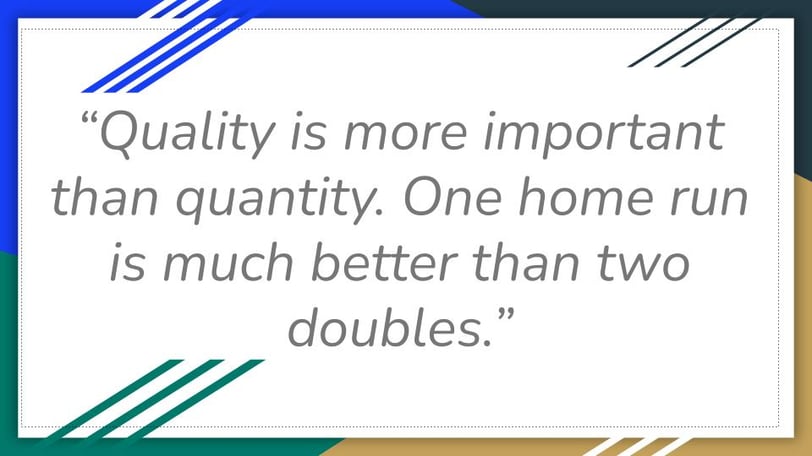Understanding MCQ on ISO 9001:2015 Clause 4 Context of the Organization
Dive into Clause 4 of ISO 9001:2015, focusing on the significance of understanding your organization's context. Discover internal and external factors that affect success with our informative MCQs and detailed justifications. Enhance your knowledge of ISO 9001 MCQs today!


Multiple Choice Question ISO 9001 : 2015
21. Why is it important to understand the context of the organization as required by ISO 9001:2015 Clause 4?
A) To improve financial standing
B) To ensure that the QMS is tailored to the specific needs and circumstances of the organization
C) To increase customer loyalty
D) To comply with all external audits
Answer: B) To ensure that the QMS is tailored to the specific needs and circumstances of the organization
Justification:
Understanding the context of the organization helps tailor the QMS to its unique circumstances, ensuring that it addresses the specific internal and external factors that could impact its ability to meet customer and regulatory requirements.
22. How should an organization monitor changes in its internal and external context as per Clause 4.1?
A) By conducting financial audits every six months
B) By regularly reviewing and updating the context of the organization
C) By increasing the frequency of customer surveys
D) By assigning a third-party consultant
Answer: B) By regularly reviewing and updating the context of the organization
Justification:
Organizations are expected to monitor and review changes in internal and external issues to ensure the QMS remains effective and relevant. This is crucial for adapting to new risks and opportunities as they arise.
23. Clause 4.2 of ISO 9001:2015 requires organizations to consider the needs of interested parties. Which of the following is NOT considered an interested party in the context of the QMS?
A) Competitors
B) Customers
C) Employees
D) Regulatory authorities
Answer: A) Competitors
Justification:
While competitors influence market conditions, they are not typically considered interested parties in the QMS context. Interested parties generally include customers, suppliers, employees, and regulatory authorities who have a direct interest in or impact on the organization's ability to meet QMS objectives.
24. What is the significance of defining the scope of the QMS as per Clause 4.3 of ISO 9001:2015?
A) To limit the extent of the quality audits
B) To clarify the boundaries and applicability of the QMS
C) To restrict the number of employees involved in the QMS
D) To identify financial resources required for the QMS
Answer: B) To clarify the boundaries and applicability of the QMS
Justification:
The scope of the QMS outlines which parts of the organization and which activities are covered by the QMS. This is essential for ensuring clarity about the QMS's applicability and its boundaries.
25. When considering internal and external context as per Clause 4.1, which of the following should organizations use to monitor the context?
A) Customer feedback only
B) SWOT analysis (Strengths, Weaknesses, Opportunities, and Threats)
C) Internal audit reports exclusively
D) Financial reports
Answer: B) SWOT analysis (Strengths, Weaknesses, Opportunities, and Threats)
Justification:
A SWOT analysis is a practical tool for organizations to assess internal strengths and weaknesses and external opportunities and threats. This aligns with the need to understand internal and external issues that can affect the QMS.
26. Which of the following methods can be used to determine internal and external issues as required by Clause 4.1 of ISO 9001:2015?
A) Employee surveys
B) Management reviews
C) Market analysis and risk assessments
D) All of the above
Answer: D) All of the above
Justification:
Organizations can use various methods such as employee feedback, management reviews, market analysis, and risk assessments to determine the internal and external issues that can impact their QMS.
27. Which statement best describes the relationship between Clause 4.1 (Context of the Organization) and Clause 4.2 (Interested Parties)?
A) Both clauses focus on financial aspects of the organization
B) Clause 4.1 focuses on external context, while Clause 4.2 focuses on internal context
C) Clause 4.1 addresses issues that affect the QMS, while Clause 4.2 addresses the expectations of stakeholders
D) Clause 4.2 focuses on employee performance, while Clause 4.1 focuses on organizational risks
Answer: C) Clause 4.1 addresses issues that affect the QMS, while Clause 4.2 addresses the expectations of stakeholders
Justification:
Clause 4.1 focuses on identifying internal and external issues that can impact the QMS, while Clause 4.2 emphasizes understanding the needs and expectations of interested parties (stakeholders), ensuring the QMS addresses both organizational issues and stakeholder requirements.
28. Clause 4.4 of ISO 9001:2015 requires that organizations maintain documented information for which of the following?
A) To demonstrate the financial performance of the QMS
B) To support the operation of processes and demonstrate conformity to requirements
C) To track employee productivity
D) To document customer complaints
Answer: B) To support the operation of processes and demonstrate conformity to requirements
Justification:
Clause 4.4.2 requires organizations to maintain documented information to ensure that processes are being performed as planned and to demonstrate that the processes meet the quality management system’s requirements.
29. How often should an organization review its internal and external issues according to ISO 9001:2015 Clause 4.1?
A) At the time of the certification audit
B) Whenever a significant change occurs
C) Annually during the management review
D) Only when customer complaints increase
Answer: B) Whenever a significant change occurs
Justification:
Organizations should regularly review and monitor their internal and external issues, especially when significant changes occur. This helps ensure that the QMS remains relevant and effective in changing circumstances.
30. In Clause 4.2, "Interested parties" can include which of the following?
A) Competitors, customers, and suppliers
B) Customers, suppliers, employees, and regulatory authorities
C) Shareholders and competitors only
D) Employees and business competitors
Answer: B) Customers, suppliers, employees, and regulatory authorities
Justification:
Interested parties are individuals or groups that affect or are affected by the organization’s activities and QMS. This includes stakeholders such as customers, suppliers, employees, and regulatory authorities.
For Question and answer 1 to 10 please visit https://www.qmsknowledge.com/iso-9001-mcq-context-of-organization-internal-factors
For Question and answer 11 to 20 please visit https://www.qmsknowledge.com/mcq-on-iso-90012015-clause-4-context-of-the-organization
